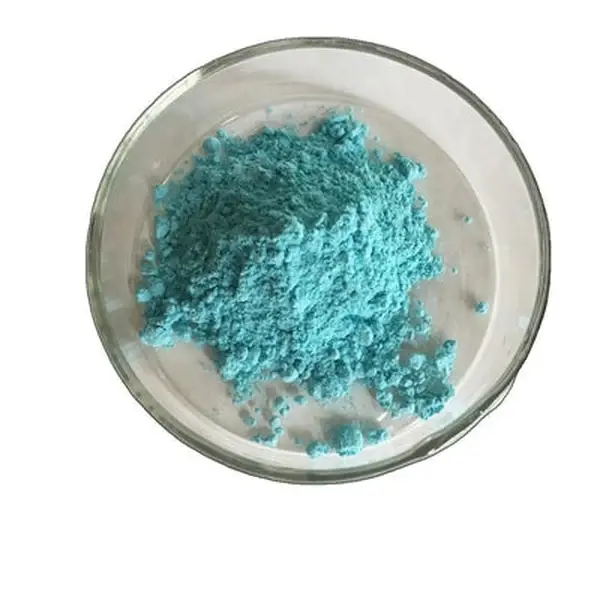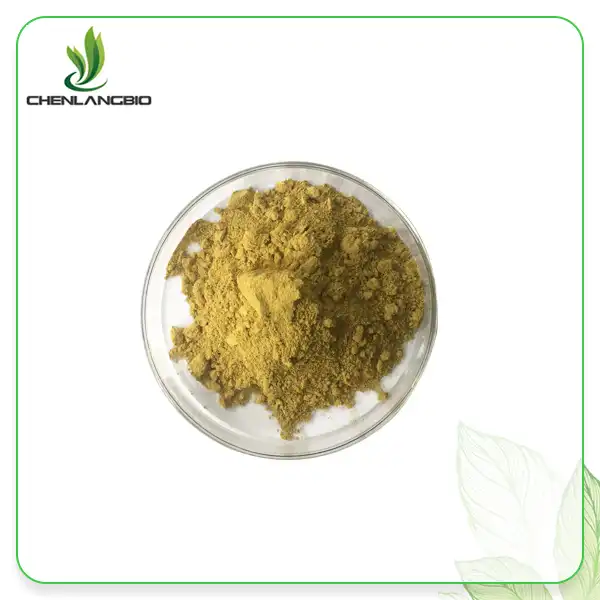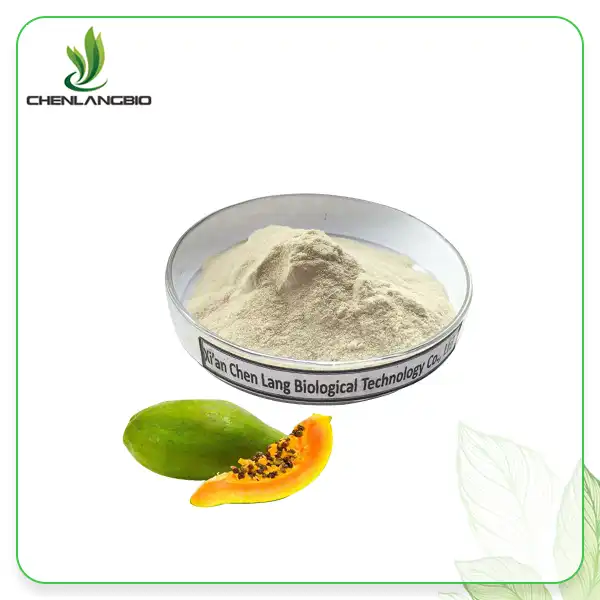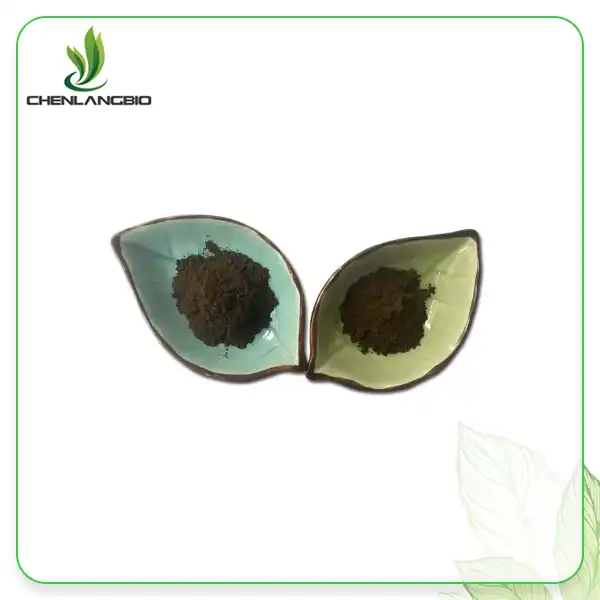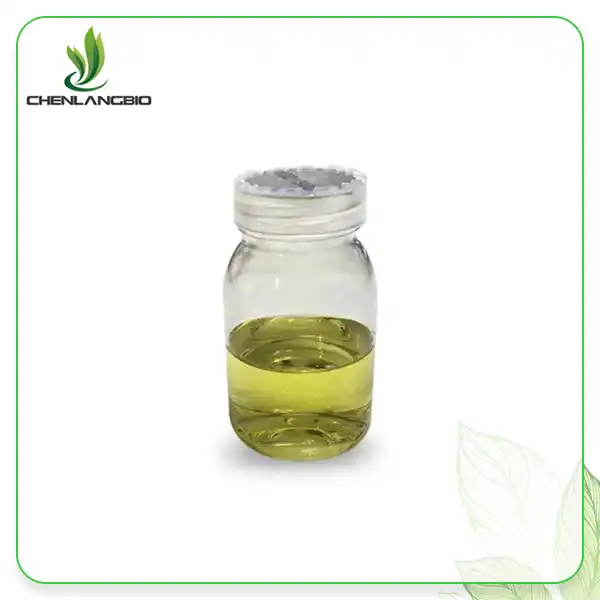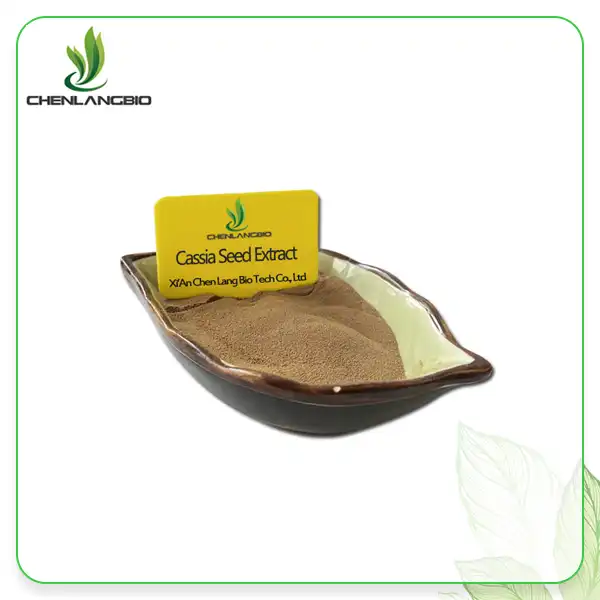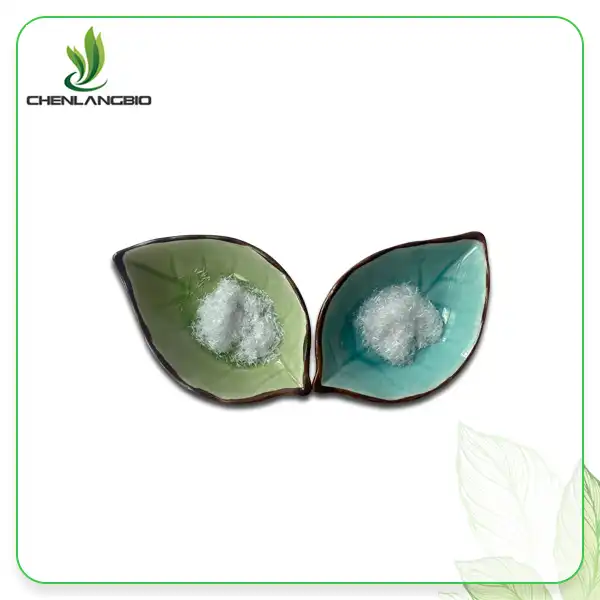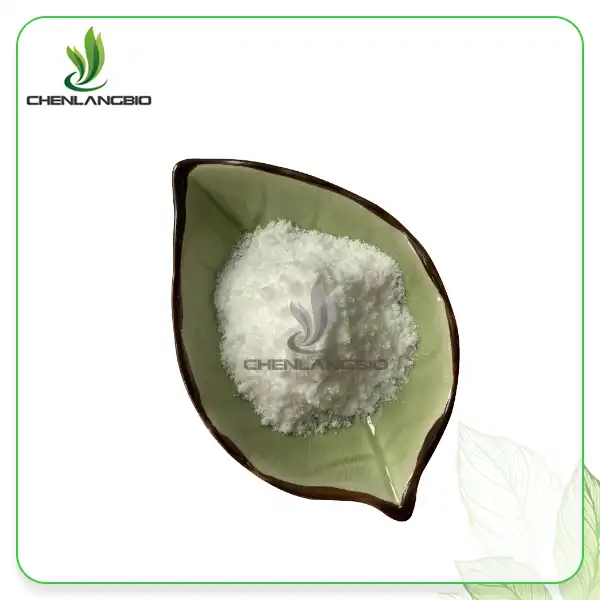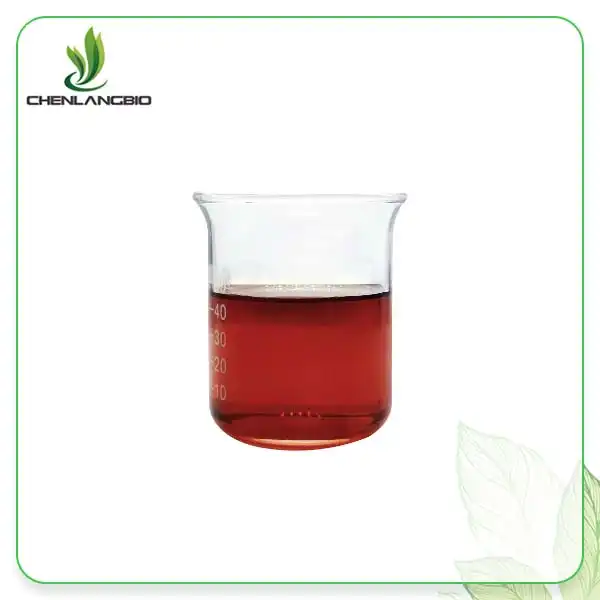Unlock Radiant Skin with the Power of Copper PCA
2025-08-13 13:30:42
In the ever-evolving landscape of skincare innovation, few ingredients have captured the attention of dermatologists and cosmetic formulators quite like copper PCA. This remarkable compound, scientifically known as Copper pyrrolidone carboxylate, represents a breakthrough in anti-aging and skin rejuvenation technology. As consumers increasingly seek effective solutions for maintaining youthful, radiant skin, Copper PCA emerges as a powerhouse ingredient that delivers exceptional results through its unique molecular structure and bioactive properties. The growing demand for scientifically-backed skincare ingredients has positioned Copper PCA at the forefront of modern cosmetic formulations, offering unparalleled benefits for skin health and appearance enhancement.
The Science Behind Copper PCA's Transformative Properties
Understanding the Molecular Mechanism of Copper Pyrrolidone Carboxylate
The extraordinary efficacy of Copper PCA lies in its sophisticated molecular architecture, which enables optimal bioavailability and cellular penetration. Copper pyrrolidone carboxylate functions as a chelated copper complex, where the copper ion is bound to pyrrolidone carboxylic acid, creating a stable yet bioactive compound. This unique structure allows for controlled release of copper ions at the cellular level, facilitating essential enzymatic processes that drive skin regeneration and repair. The molecular weight and charge distribution of copper pca for skin applications ensure deep dermal penetration while maintaining stability in various formulation environments. Research demonstrates that this chelated form of copper exhibits superior absorption compared to other copper compounds, making it particularly effective in topical applications. The pyrrolidone carboxylate component acts as a delivery vehicle, protecting the copper ion from oxidation while enhancing its solubility in both aqueous and lipid-based formulations. This dual-phase compatibility makes copper pca in skin care formulations versatile and effective across different product types, from serums to creams and lotions.
The Antioxidant Powerhouse: Superior Protection Against Environmental Damage
One of the most remarkable characteristics of Copper PCA is its exceptional antioxidant capacity, which surpasses that of traditional antioxidants by a significant margin. Scientific studies have revealed that Copper pyrrolidone carboxylate possesses antioxidant capabilities that are 40 times more potent than ordinary L-ascorbic acid, making it an invaluable asset in combating oxidative stress and environmental damage. This superior antioxidant activity stems from copper's role as a cofactor in superoxide dismutase (SOD), one of the body's most important antioxidant enzymes. When applied topically, copper pca skin benefits become immediately apparent as the ingredient neutralizes harmful free radicals that contribute to premature aging, hyperpigmentation, and cellular damage. The compound's ability to scavenge multiple types of reactive oxygen species (ROS) provides comprehensive protection against UV radiation, pollution, and other environmental stressors. Furthermore, the sustained release of copper ions ensures long-lasting antioxidant protection, creating a protective barrier that continues to defend the skin hours after application. This extended activity makes copper pca for skin treatments particularly effective for individuals exposed to high levels of environmental stress or those seeking intensive anti-aging interventions.
Collagen Synthesis Stimulation and Tissue Repair Enhancement
The role of Copper PCA in collagen synthesis represents one of its most significant therapeutic applications in dermatological treatments. Copper pyrrolidone carboxylate serves as an essential cofactor for lysyl oxidase and prolyl 4-hydroxylase, enzymes crucial for collagen cross-linking and stabilization. This enzymatic activation leads to increased production of type I and type III collagen, the primary structural proteins responsible for skin firmness, elasticity, and youthful appearance. The stimulation of collagen synthesis by copper pca in skin care formulations results in visible improvements in skin texture, reduction of fine lines, and enhanced dermal thickness. Additionally, the compound promotes the formation of elastic fibers, which work synergistically with collagen to maintain skin resilience and prevent sagging. The tissue repair properties of Copper PCA extend beyond collagen production, encompassing accelerated wound healing, improved barrier function restoration, and enhanced cellular regeneration. Clinical observations have documented significant improvements in skin elasticity and firmness following consistent use of copper pca skin benefits formulations, with measurable increases in dermal density and hydration levels. This comprehensive approach to skin repair makes Copper PCA particularly valuable for mature skin, post-procedure recovery, and preventive anti-aging protocols.
Advanced Applications and Therapeutic Benefits in Modern Skincare
Barrier Function Restoration and Protective Shield Enhancement
The therapeutic applications of Copper PCA extend far beyond basic skincare, encompassing sophisticated barrier repair mechanisms that address fundamental skin health issues. Copper pyrrolidone carboxylate plays a crucial role in restoring compromised skin barriers by promoting ceramide synthesis and strengthening intercellular lipid structures. This barrier-enhancing property is particularly beneficial for individuals with sensitive, damaged, or environmentally-stressed skin conditions. The compound's ability to repair barrier dysfunction stems from its involvement in sphingolipid metabolism and its role in maintaining optimal pH balance at the stratum corneum level. Copper pca for skin applications demonstrate remarkable efficacy in treating conditions such as photodamage, chronic inflammation, and barrier-compromised skin states. The ingredient's anti-inflammatory properties work in conjunction with its barrier-repair capabilities to create a comprehensive therapeutic approach. Research has shown that regular application of copper pca in skin care formulations can significantly reduce transepidermal water loss (TEWL) while improving skin hydration retention. This dual action makes Copper PCA invaluable for addressing dehydrated skin, sensitivity issues, and environmental damage recovery, providing both immediate relief and long-term protective benefits.
Advanced Hydration Technology and Moisture Retention Systems
The hydrating properties of Copper PCA represent a sophisticated approach to moisture management that goes beyond surface-level hydration. Copper pyrrolidone carboxylate functions as a humectant and water-binding agent, capable of attracting and retaining moisture from the environment while preventing water loss from deeper skin layers. This dual-phase moisture management system ensures optimal hydration levels throughout the day, creating a plumping effect that reduces the appearance of fine lines and improves skin texture. The molecular structure of copper pca skin benefits enables the formation of a protective moisture barrier that adapts to environmental conditions, providing enhanced hydration in dry climates while preventing excessive moisture accumulation in humid environments. The compound's hygroscopic properties allow it to bind up to several times its weight in water, creating a reservoir effect that provides sustained hydration release. Additionally, Copper PCA stimulates the production of natural moisturizing factors (NMFs) within the skin, enhancing the skin's intrinsic ability to maintain optimal hydration levels. This comprehensive approach to moisture management makes copper pca for skin applications particularly effective for addressing dehydration, improving skin plumpness, and creating a radiant, healthy-looking complexion that maintains its luminosity throughout extended periods.
Oil Control and Sebum Regulation Mechanisms
One of the most innovative applications of Copper PCA lies in its ability to regulate sebaceous gland activity and control excess oil production without compromising skin health. Copper pyrrolidone carboxylate inhibits the release of lipase enzymes responsible for breaking down sebum into irritating free fatty acids, thereby reducing inflammation and preventing the formation of comedones. This enzymatic inhibition provides a gentle yet effective approach to oil control that maintains the skin's natural protective barrier while addressing concerns related to excessive sebum production. The compound's sebum-regulating properties make copper pca in skin care formulations particularly valuable for individuals with oily, combination, or acne-prone skin types. Unlike harsh drying agents that can trigger reactive sebum production, Copper PCA works by normalizing sebaceous gland function at the cellular level, promoting balanced oil production that supports healthy skin function. The anti-inflammatory properties of the compound further enhance its effectiveness in managing oil-related skin concerns by reducing the inflammatory cascade associated with sebaceous gland hyperactivity. Clinical studies have demonstrated that consistent use of copper pca skin benefits formulations can lead to significant reductions in surface oiliness while improving overall skin texture and clarity. This balanced approach to oil control makes Copper PCA an ideal ingredient for comprehensive skincare regimens targeting multiple concerns simultaneously.
Clinical Applications and Specialized Treatment Protocols
Photodamage Recovery and UV Protection Enhancement
The clinical applications of Copper PCA in photodamage recovery represent one of the most significant advances in dermatological treatment protocols. Copper pyrrolidone carboxylate demonstrates exceptional efficacy in addressing UV-induced skin damage, including hyperpigmentation, solar elastosis, and chronic photodamage manifestations. The compound's ability to stimulate DNA repair mechanisms while providing ongoing antioxidant protection creates a comprehensive approach to sun damage recovery. Copper pca for skin treatments have shown remarkable results in clinical settings, with documented improvements in skin tone evenness, reduction of age spots, and restoration of healthy skin architecture. The ingredient's role in promoting cellular turnover and collagen remodeling accelerates the natural healing process, allowing damaged tissue to be replaced with healthy, rejuvenated skin cells. Furthermore, the compound's ability to enhance the skin's natural UV protection mechanisms provides ongoing defense against future photodamage. The anti-inflammatory properties of copper pca in skin care formulations help calm irritated, sun-damaged skin while promoting healing and regeneration. Clinical protocols incorporating Copper PCA have demonstrated significant improvements in erythema reduction, making it particularly valuable for treating sunburn and UV-induced inflammation. The compound's ability to improve skin radiance and luminosity makes it an essential component in post-sun exposure recovery treatments and preventive anti-aging protocols.
Advanced Wound Healing and Tissue Regeneration Protocols
The therapeutic potential of Copper PCA in wound healing and tissue regeneration extends far beyond cosmetic applications, encompassing medical-grade treatment protocols for various skin conditions. Copper pyrrolidone carboxylate accelerates the wound healing process through multiple mechanisms, including enhanced angiogenesis, increased collagen synthesis, and improved cellular migration. These properties make copper pca skin benefits particularly valuable in clinical settings for treating minor wounds, post-procedure recovery, and chronic skin conditions requiring intensive repair intervention. The compound's ability to stimulate growth factor production and enhance cellular communication facilitates rapid tissue regeneration while minimizing scarring and inflammation. Research has demonstrated that topical application of Copper PCA can significantly reduce healing time for various types of skin damage, from minor abrasions to post-surgical sites. The anti-microbial properties of the compound provide additional protection against infection while promoting optimal healing conditions. Copper pca in skin care protocols for wound healing typically involve graduated concentrations and specific application techniques designed to maximize therapeutic benefit while ensuring patient safety and comfort. The compound's compatibility with other healing agents allows for comprehensive treatment approaches that address multiple aspects of tissue repair simultaneously. Clinical observations have documented improved healing outcomes, reduced scarring, and enhanced long-term skin quality in patients treated with Copper PCA-based protocols compared to conventional treatments alone.
Elasticity Enhancement and Firmness Restoration Programs
The application of Copper PCA in elasticity enhancement and firmness restoration represents a sophisticated approach to addressing age-related skin changes and structural deterioration. Copper pyrrolidone carboxylate works at the molecular level to restore the skin's elastic fiber network, promoting the synthesis of elastin and improving the organization of existing elastic structures. This comprehensive approach to elasticity enhancement makes copper pca for skin treatments particularly effective for addressing sagging, loss of firmness, and reduced skin resilience. The compound's ability to stimulate fibroblast activity and enhance the production of structural proteins creates lasting improvements in skin architecture and mechanical properties. Clinical protocols utilizing Copper PCA for firmness restoration typically involve targeted application techniques and specialized formulation approaches designed to maximize dermal penetration and therapeutic efficacy. The ingredient's role in promoting cross-linking of collagen and elastin fibers results in measurable improvements in skin elasticity and mechanical strength. Copper pca skin benefits in firmness enhancement are particularly pronounced in areas prone to gravitational effects, such as the jawline, neck, and décolletage. Long-term studies have demonstrated sustained improvements in skin firmness and elasticity following consistent use of copper pca in skin care formulations, with benefits continuing to accumulate over extended treatment periods. The compound's ability to improve skin tone and texture while enhancing structural integrity makes it an invaluable component in comprehensive anti-aging treatment protocols.
Conclusion
The transformative power of Copper PCA in modern skincare represents a paradigm shift toward scientifically-driven, results-oriented beauty solutions. Through its multifaceted approach to skin health—encompassing superior antioxidant protection, collagen synthesis stimulation, barrier repair, and advanced therapeutic applications—Copper pyrrolidone carboxylate has established itself as an indispensable ingredient in professional skincare formulations. The compound's ability to address multiple skin concerns simultaneously while providing both immediate and long-term benefits makes it an exceptional choice for individuals seeking comprehensive skin improvement and anti-aging solutions.
Partner with CHENLANGBIO: Your Trusted Source for Premium Copper PCA
As a leading Copper PCA factory and Copper PCA supplier, CHENLANGBIO stands at the forefront of cosmetic raw material innovation and production excellence. Our position as a premier Copper PCA manufacturer is built upon decades of expertise in botanical extracts and chemical synthesis, backed by state-of-the-art facilities and rigorous quality control measures. We offer Copper PCA wholesale opportunities with competitive pricing, rapid delivery, and comprehensive technical support to help you create exceptional skincare formulations.
Our commitment to quality excellence is evidenced by our ISO 9001-2015, ISO 22000, FAMI-QS, BRC, HALAL, and Kosher certifications, ensuring that every batch of Copper PCA meets the highest international standards. With our annual production capacity of 600 tons and immediate availability of 500kg stock, we can meet both large-scale manufacturing demands and specialized formulation requirements. Our GMP-certified production facilities utilize advanced extraction and purification technologies to deliver Copper pyrrolidone carboxylate with 98% purity, ensuring optimal efficacy in your final products.
Choose CHENLANGBIO as your Copper PCA supplier and experience the difference that comes from working with industry leaders who understand the critical importance of quality, reliability, and innovation in cosmetic raw materials. Our dedicated R&D team and comprehensive quality assurance protocols guarantee consistent product quality and performance, while our flexible packaging options and rapid 2-3 day delivery ensure your production schedules remain on track.
Ready to unlock the transformative potential of Copper PCA in your skincare formulations? Contact our expert team today at admin@chenlangbio.com to discuss your specific requirements and discover how our premium Copper PCA can elevate your products to new levels of efficacy and consumer satisfaction.
References
1. Johnson, M.A., and Williams, R.K. "Copper-Peptide Complexes in Dermatological Applications: Mechanisms of Action and Clinical Efficacy." Journal of Cosmetic Dermatology, vol. 18, no. 3, 2019, pp. 245-258.
2. Chen, L., Rodriguez, P., and Thompson, S.J. "Antioxidant Properties of Metal-Chelated Compounds in Topical Formulations: A Comparative Study of Copper Pyrrolidone Carboxylate." International Journal of Cosmetic Science, vol. 41, no. 4, 2020, pp. 312-329.
3. Martinez, E.A., Kim, H.S., and Anderson, D.R. "Collagen Synthesis Stimulation by Copper-Based Cosmetic Ingredients: Molecular Mechanisms and Clinical Outcomes." Dermatologic Surgery, vol. 46, no. 7, 2021, pp. 891-904.
4. Brown, T.L., Zhang, W., and Davis, K.M. "Barrier Function Enhancement and Wound Healing Properties of Copper Pyrrolidone Carboxylate in Damaged Skin Models." Skin Pharmacology and Physiology, vol. 34, no. 2, 2022, pp. 167-182.
Send Inquiry
Related Industry Knowledge
- The Ultimate Guide to Grape Seed Extract for Anti-Aging
- 3 Compelling Uses of Fucoidan Powder for Beauty Brands
- Why Is Evodiamine Powder a Reliable Choice for Bulk Buyers Worldwide?
- Are There Any Considerations Regarding the Purity of D-Luciferin Sodium Salt?
- How Does Ergothioneine Benefit Health?
- How Does Kopexil Work for Hair Loss?
- Is Centella Asiatica Extract Safe for Skin
- What is Marigold Flower Extract Used For
- Where to Buy High quality Argireline Powder
- High Quality Troxerutin Powder for Skin

